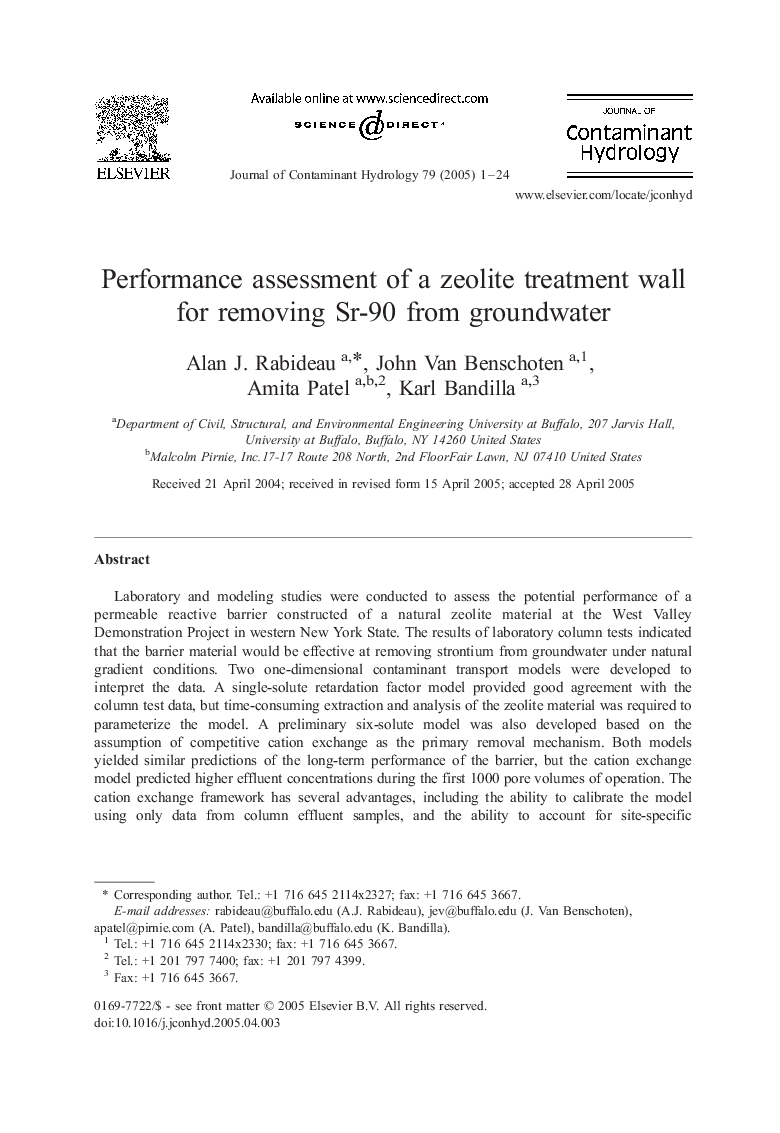| Article ID | Journal | Published Year | Pages | File Type |
|---|---|---|---|---|
| 9482831 | Journal of Contaminant Hydrology | 2005 | 24 Pages |
Abstract
Laboratory and modeling studies were conducted to assess the potential performance of a permeable reactive barrier constructed of a natural zeolite material at the West Valley Demonstration Project in western New York State. The results of laboratory column tests indicated that the barrier material would be effective at removing strontium from groundwater under natural gradient conditions. Two one-dimensional contaminant transport models were developed to interpret the data. A single-solute retardation factor model provided good agreement with the column test data, but time-consuming extraction and analysis of the zeolite material was required to parameterize the model. A preliminary six-solute model was also developed based on the assumption of competitive cation exchange as the primary removal mechanism. Both models yielded similar predictions of the long-term performance of the barrier, but the cation exchange model predicted higher effluent concentrations during the first 1000 pore volumes of operation. The cation exchange framework has several advantages, including the ability to calibrate the model using only data from column effluent samples, and the ability to account for site-specific differences in the groundwater cation composition. However, additional laboratory work is needed to develop a suitably robust model.
Related Topics
Physical Sciences and Engineering
Earth and Planetary Sciences
Earth-Surface Processes
Authors
Alan J. Rabideau, John Van Benschoten, Amita Patel, Karl Bandilla,
